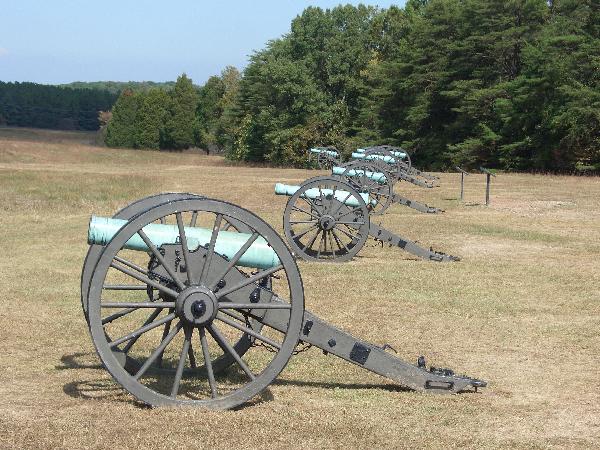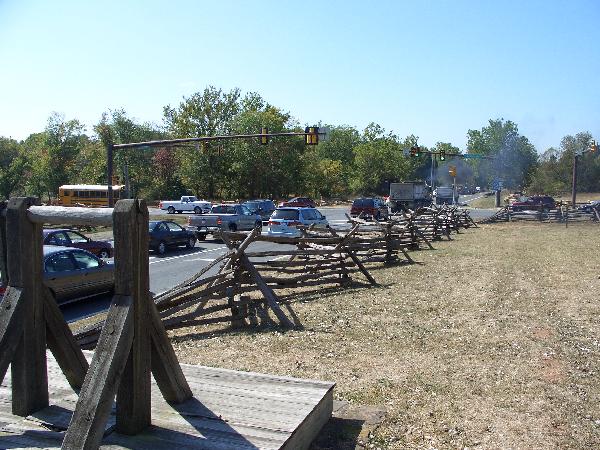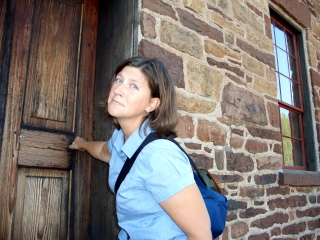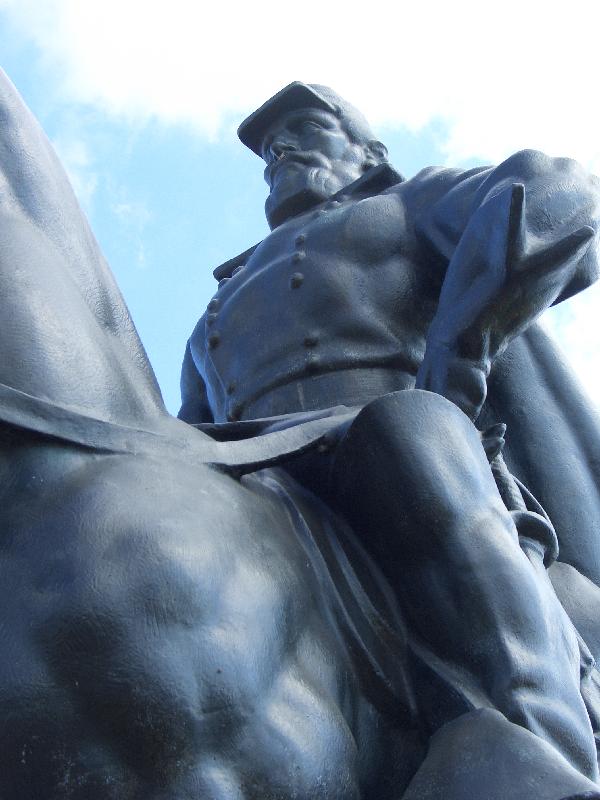NPS Website; Local Website
WHAT IS IT?
 Site of two early Civil War battles, in July 1861 and August 1862. The Battles are also known by their Union moniker, the First and Second Battles of Bull Run.
Site of two early Civil War battles, in July 1861 and August 1862. The Battles are also known by their Union moniker, the First and Second Battles of Bull Run.BEAUTY (4/10)
Northern Virginia’s rolling landscape of expansive farm estates, stately foliage and old brick houses speaks of a gentried, southern aristocratic past (and present). The battlefield’s lush green fields and thinned woodlands would like to go on forever but are sliced into sectors by crowded thoroughfares and hemmed in on all sides by the encroaching suburban sprawl.
The roads through the Park are narrow thoroughfares, only slightly unchanged from the days of horse-drawn carriages. Only nowadays, they absorb constant bumper-to-bumper traffic and a steady diet of smoke billowing tractor-trailers and heavy pick-up trucks.
HISTORICAL INTEREST (7/10)
The First Battle of Bull Run opened the American Civil War. The decisive Confederate victory proved to all that the War would neither end in 90 days nor be an easy Union triumph. The oft-cited story of Washington DC politicos and wives in formal dress watching the battle from a nearby hill occurred during First Bull Run.
Second Manassas was another Confederate triumph characterized by the usual incompetence of General George McClellan, then head of the Union Army of the Potomac.
 CROWDS (2/10)
CROWDS (2/10)Does everyone in affluent suburban northern Virginia drive an SUV? Why haven’t the roads changed in direction or width since the Civil War? Why is there a crowded community college less than an eighth of a mile from the Visitor Center? Why are there so many people here and so few Rangers?
EASE OF USE/ACCESS (3/5)
The Federal and Confederate armies met twice at Manassas because it stood at a transportation crossroads, namely the intersection of the Warrenton Turnpike and the Manassas-Sudley Road. These roads and their heavy traffic remain. The Warrenton Turnpike, now U.S. Route 29 a/k/a the Lee Turnpike bisects the Park.
The Second Manassas Auto Tour follows these high volume arteries. Good luck keeping your wit’s end trying to pull into parking lots while 18-wheelers tailgate you with signature zeal. A Park Ranger suggested doing the Auto Tour only at a very early hour.
Manassas NBP stands in the midst of Washington DC’s large northern Virginia sprawl, about 30 miles west of our capital city. Exit 47 of Interstate 66 drops you off less than a ¼ mile south of the Park’s Visitor Center.
CONCESSIONS/BOOKSTORE (4/5)
Why is the children’s book, The Story of the Lord’s Prayer, on sale here? Just wondering. There are thousands of books for sale at Manassas NBP and its inventory tag refers to a different book. Maybe it just snuck through.
And why is a book section entitled Indian & Colored Troops? Who still uses the term colored? Have no shoppers been offended prior to our visit?
 COSTS (2/5)
COSTS (2/5)$3 per person to get in, free with the National Parks Pass. If you wish to see the introductory film, there is an additional $3 per person charge. The Parks Pass brings no cinematic discount. After 1 ½ years of National Park travel, and 240+ official NPS Sites, Manassas NBP is the first Site to charge for its introductory film.
RANGER/GUIDE TO TOURIST RATIO (2/5)
Both the one Ranger on duty and the extremely helpful volunteer seemed angry and were vocal about the neglected state of the National Park System (and Manassas NBP). Perhaps it is their proximity to Washington DC. They were neither happy nor accepting of the decision to charge for the introductory film. One volunteer even argued with the ticket vendor about the film’s rightful owner. There really should be more than one Ranger on duty given the thousands that visit Manassas every day.
TOURS/CLASSES (3/10)
Well, we do not know what the intro film is like. No way we are paying; principles you see.
Judging by the Museum displays, there was only one battle fought at Bull Run. Yes, the Museum only covers the first Battle. An understanding of the second Battle comes only through the Park brochure and a circuitous driving tour in and around heavy traffic and construction. The Park staff recommended we take the driving tour only on Sundays or in the early morning. At all other times, the trip is a nightmare.
The Park’s educational shortcomings provoked us to pull out James McPherson’s one volume Civil War classic, Battle Cry of Freedom. With book in hand and Gab as trusty narrator, our Civil War Battlefield visits have been much more lively and thorough than we ever expected.
 FUN (3/10)
FUN (3/10)The coolest part of the Battlefield was the long row of cannons just outside the Visitor Center that commemorate the Southern troops famous line of defense during the first Bull Run. This line was where Confederate General Thomas Jackson earned his immortal nickname, Stonewall. A monument to the legendary General stands nearby. Stonewall’s monument depicts him (and his horse) with rippling muscles and a larger-than-life demeanor. He looks like a superhero.
WOULD WE RECOMMEND? (3/10)
If historical sites had feelings, then the Manassas NBP would be sad, confused and deservedly claustrophobic. It would know that it has an important historical story to tell and would know by its strong visitorship that people are very interested. But it would also see the stifling traffic, thick air pollution, infringing housing developments and general educational disregard from the Park system itself.
We would recommend a trip to Bull Run to only the most devout of Civil War buffs. Manassas NBP was a stressful experience. It was too crowded and too endangered (see Pea Ridge review). We were put off by the film charge and wonder if the “pay to learn about your country’s history” route will become more common. Manassas NBP ranks at the bottom of eastern Civil War sites.
TOTAL 33/80
www.usa-c2c.com
© 2005